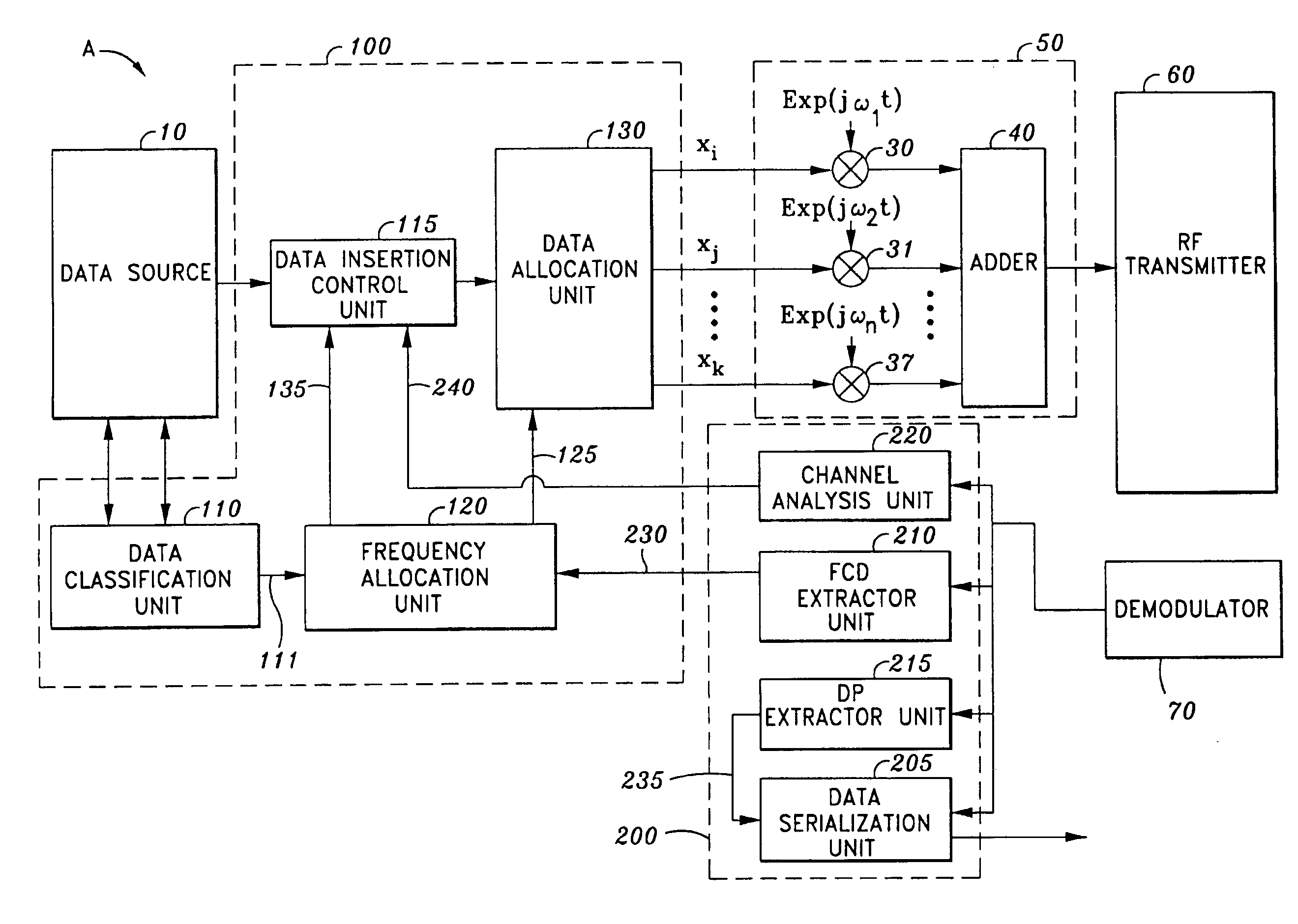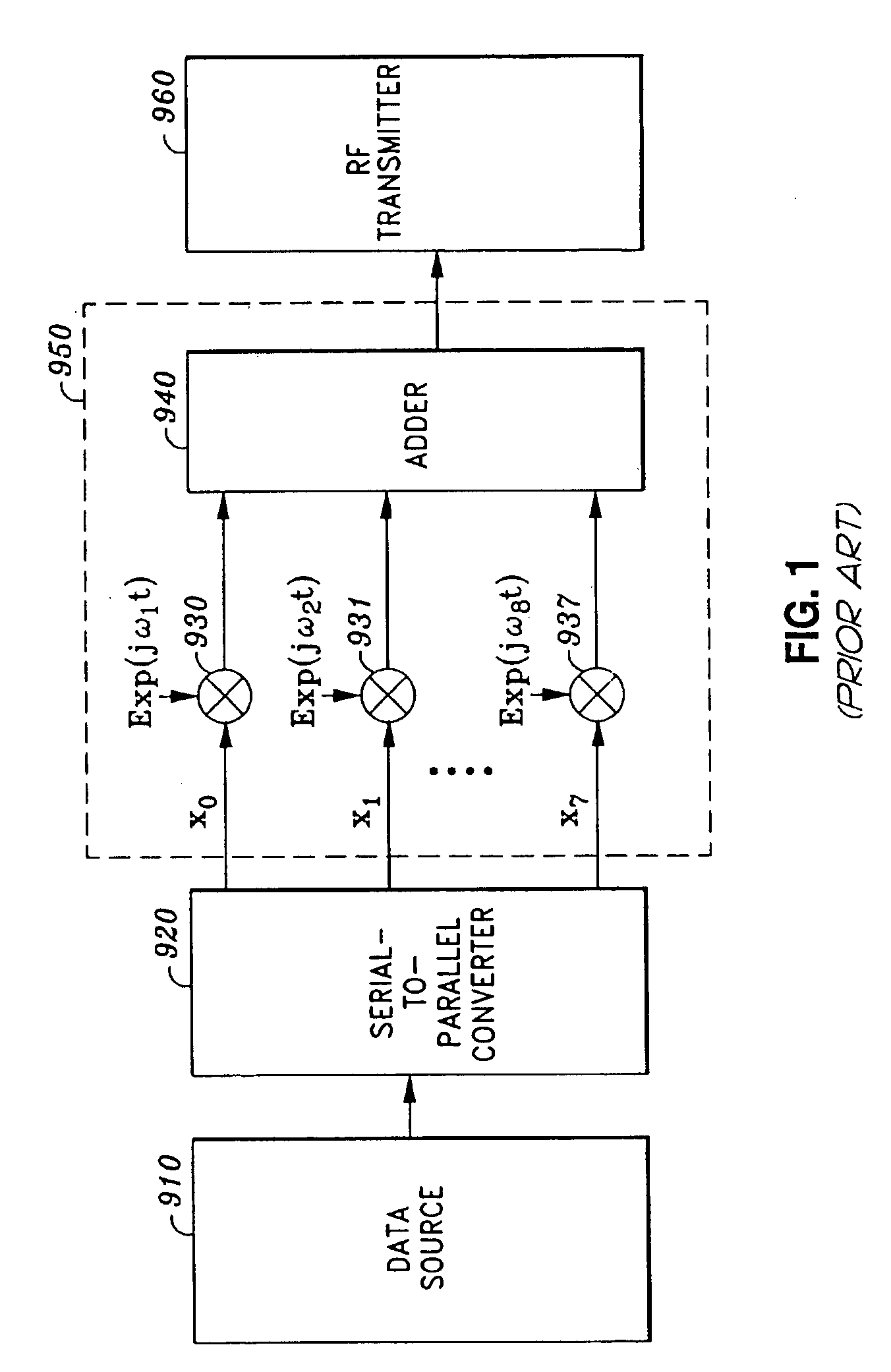Device and method for the dynamic allocation of frequencies for multicarrier modulation systems
a multi-carrier modulation and frequency allocation technology, applied in the field of information transmission, can solve problems such as erroneous detection, distortion of symbols, and interference between symbols
- Summary
- Abstract
- Description
- Claims
- Application Information
AI Technical Summary
Benefits of technology
Problems solved by technology
Method used
Image
Examples
first embodiment
[0327]The block diagram of FIG. 15 depicts a more detailed view of a peripheral station, for example of the station 1402, which comprises a data source 2020 and a communication device 2022.
[0328]In general terms, the communication device 2022 is a device for sending and receiving information according to the present invention.
[0329]This information is intended to be transmitted over a radio communication channel, in the form of carriers modulated by said information.
[0330]The data source 2020 is for example a digital camera, a computer, a printer, a server, a facsimile machine, a scanner, a digital camera, a digital photographic apparatus, a television, a video recorder or a decoder.
[0331]This communication device 2022 includes a data processing unit 2024 comprising a calculating unit 2026, a RAM 2028, a ROM 2030, a bus interface 2032 and a bus 2034 which connects the data source 2020 to said interface.
[0332]The communication device 2022 comprises a bus 2036 serving the calculating ...
second embodiment
[0463]The peripheral communication station 2802 depicted in FIG. 28 concerns the invention.
[0464]In FIG. 28, all the elements are unchanged compared with those of FIG. 15 and have the same references.
[0465]The peripheral station 2802 has a data source 2020 and an communication device 2200.
[0466]This communication device 2200 has a data processing unit 2202 which comprises a calculating unit 2026, a bus interface 2032 and a bus 2034 which connects the data source 2020 to the bus interface 2032. The data processing unit 2202 also comprises a modem interface 2038, a RAM 2204 and a ROM 2206.
[0467]The computing device 2200 also includes an information sending unit 2208 connected to a radio module 2044, which is equipped with an antenna 2046.
[0468]The communication device 2200 also includes an information reception unit 2210 connected to the radio module 2044 and a modem interface 2038.
[0469]As depicted in FIG. 28, the bus interface 2032, the calculating unit 2026, the modem interface 203...
PUM
 Login to View More
Login to View More Abstract
Description
Claims
Application Information
 Login to View More
Login to View More - R&D
- Intellectual Property
- Life Sciences
- Materials
- Tech Scout
- Unparalleled Data Quality
- Higher Quality Content
- 60% Fewer Hallucinations
Browse by: Latest US Patents, China's latest patents, Technical Efficacy Thesaurus, Application Domain, Technology Topic, Popular Technical Reports.
© 2025 PatSnap. All rights reserved.Legal|Privacy policy|Modern Slavery Act Transparency Statement|Sitemap|About US| Contact US: help@patsnap.com



